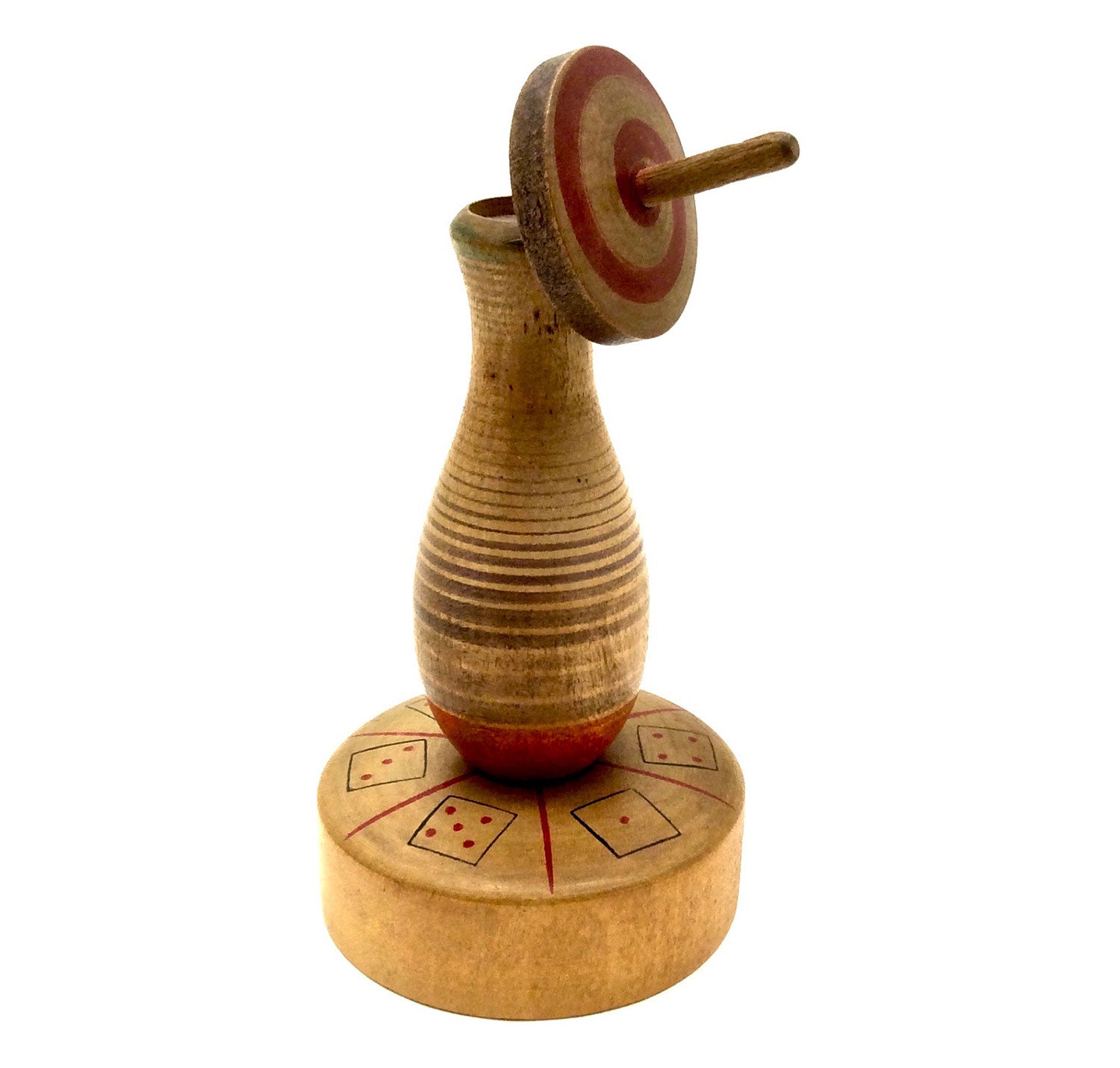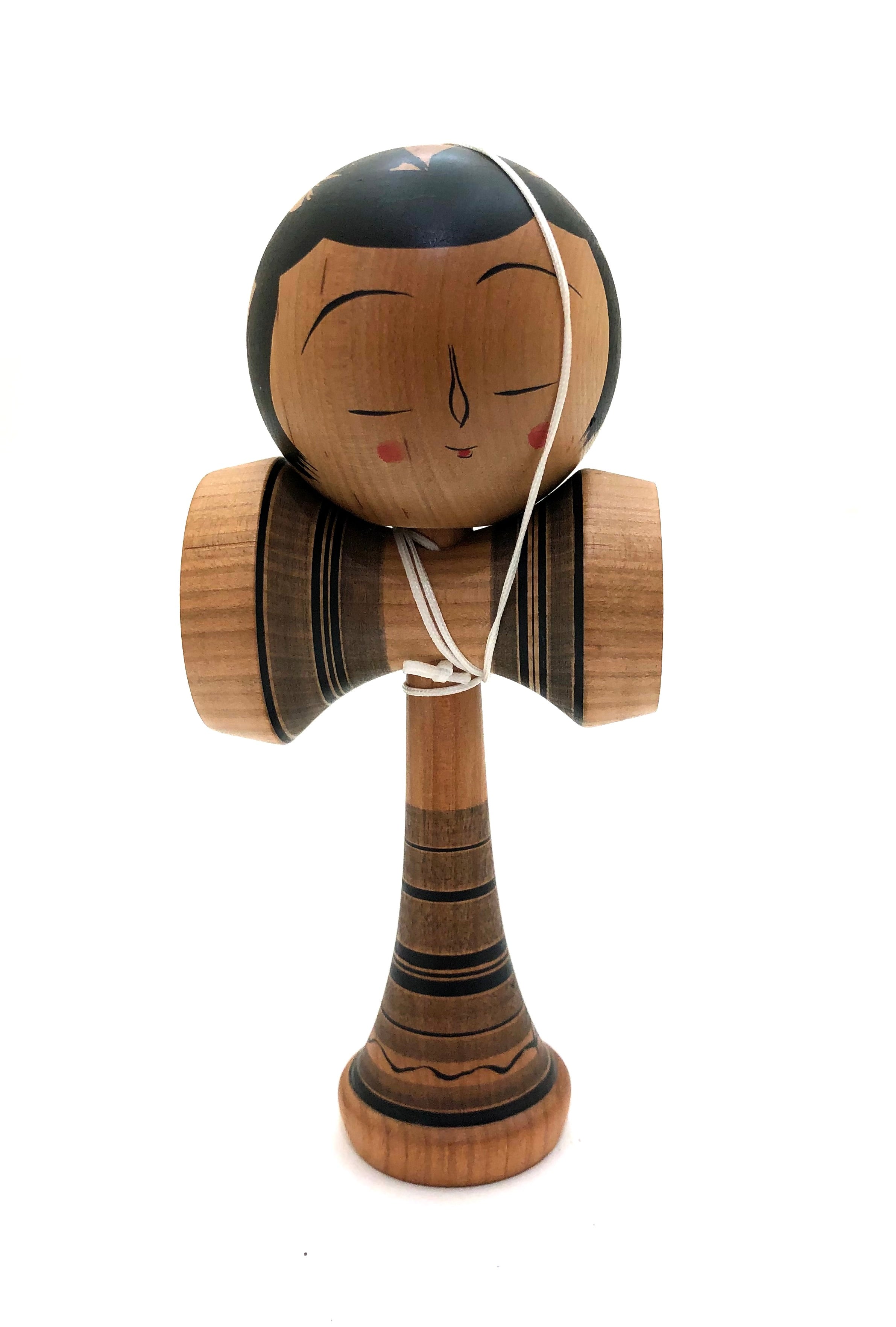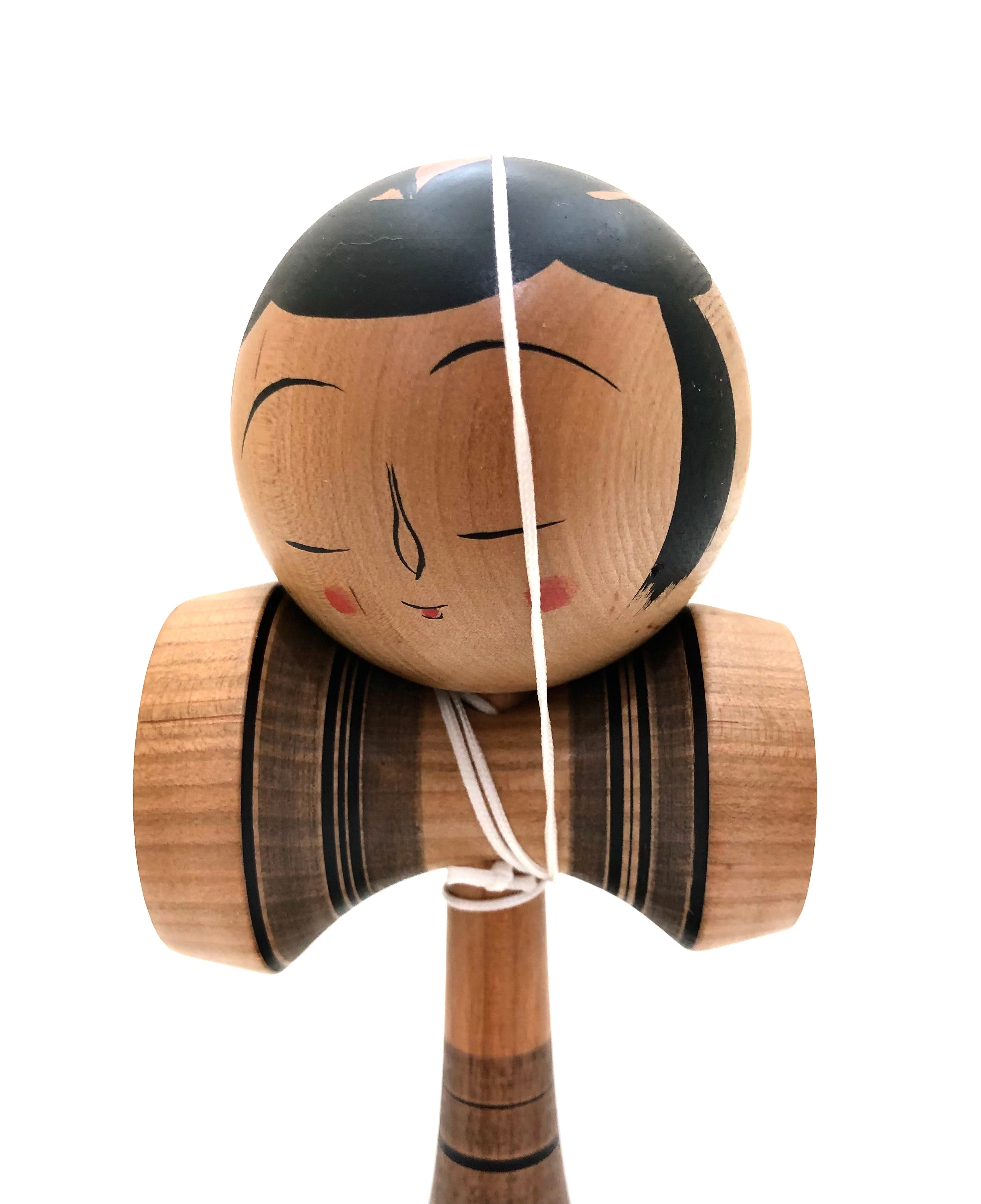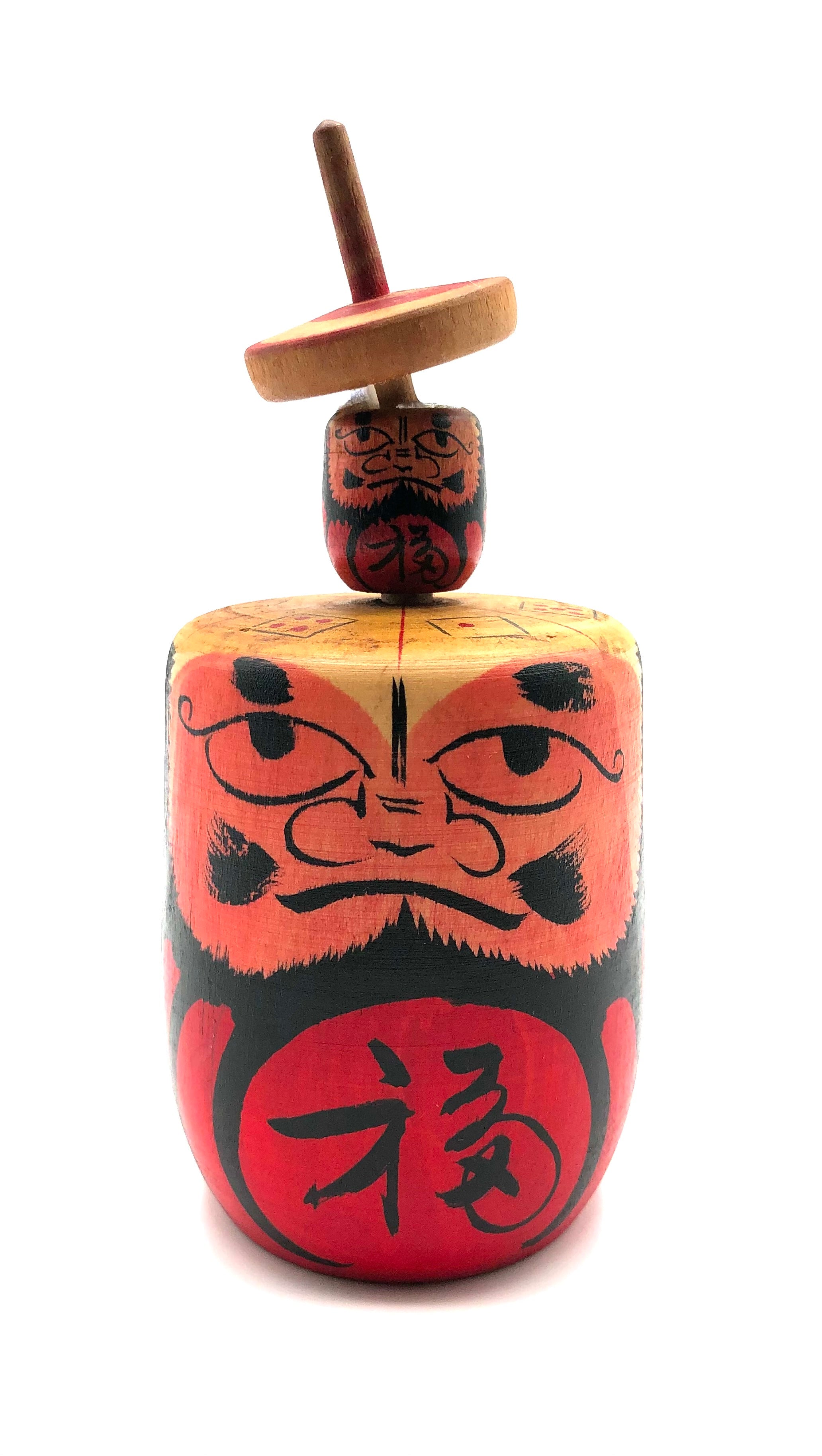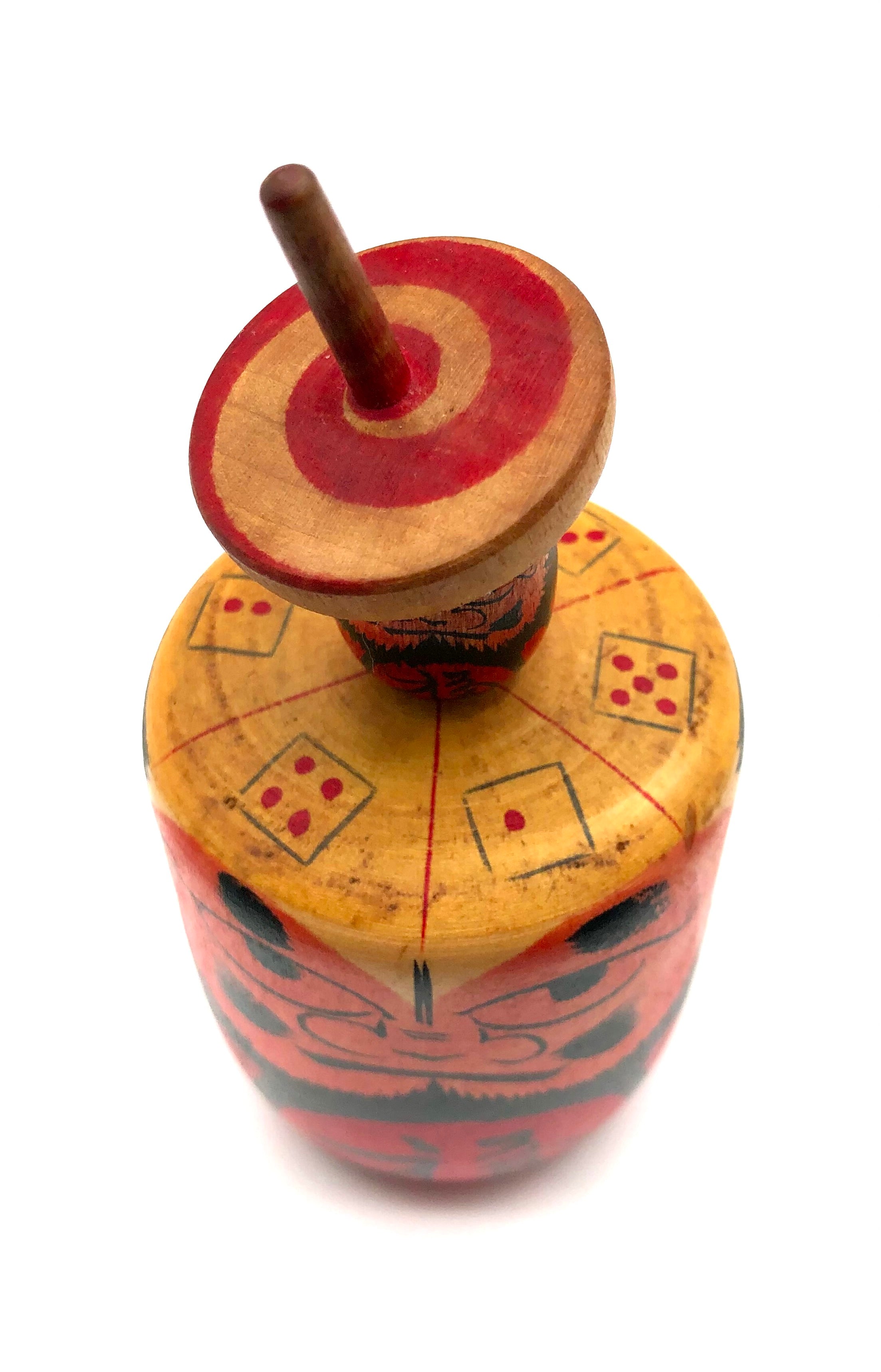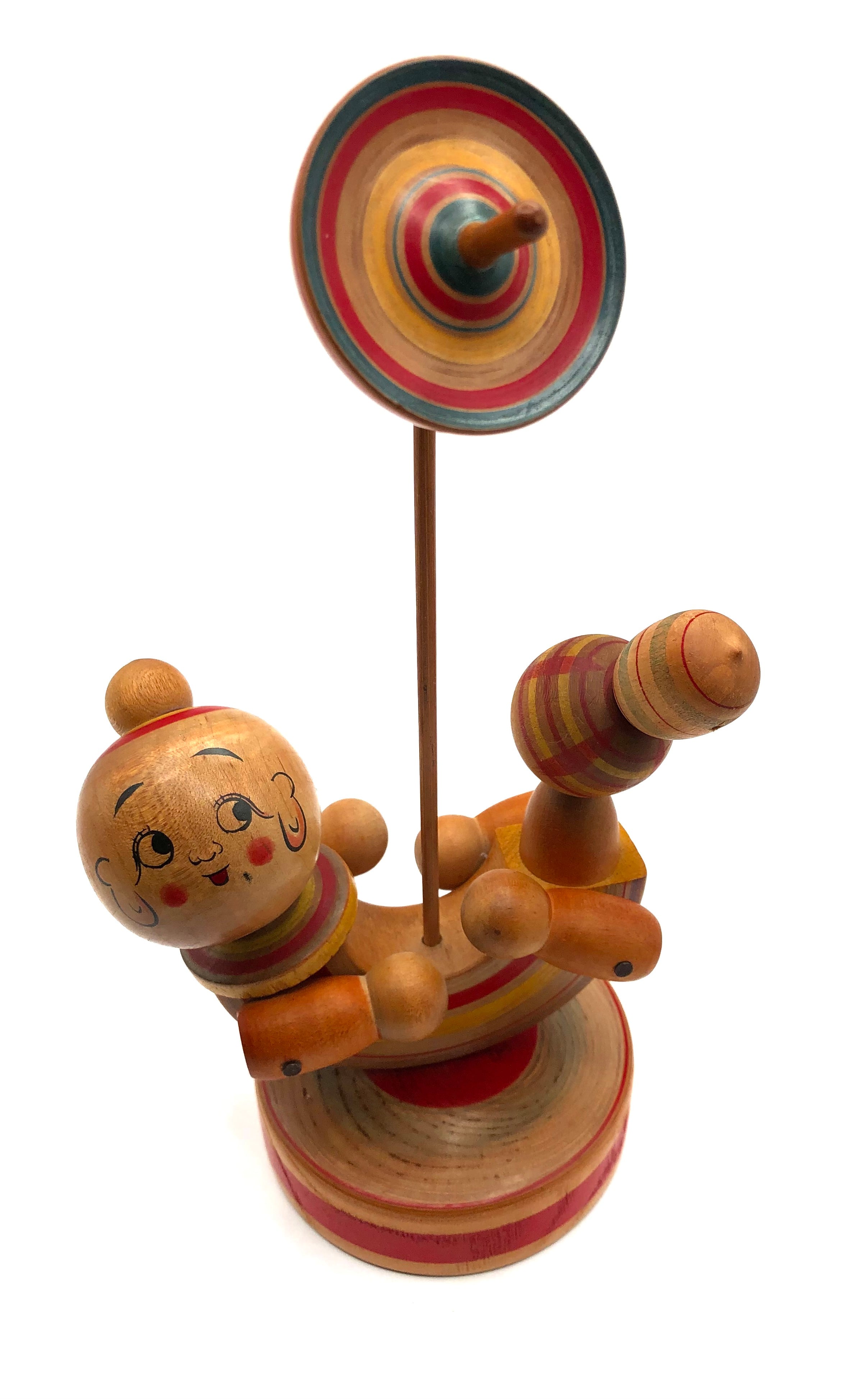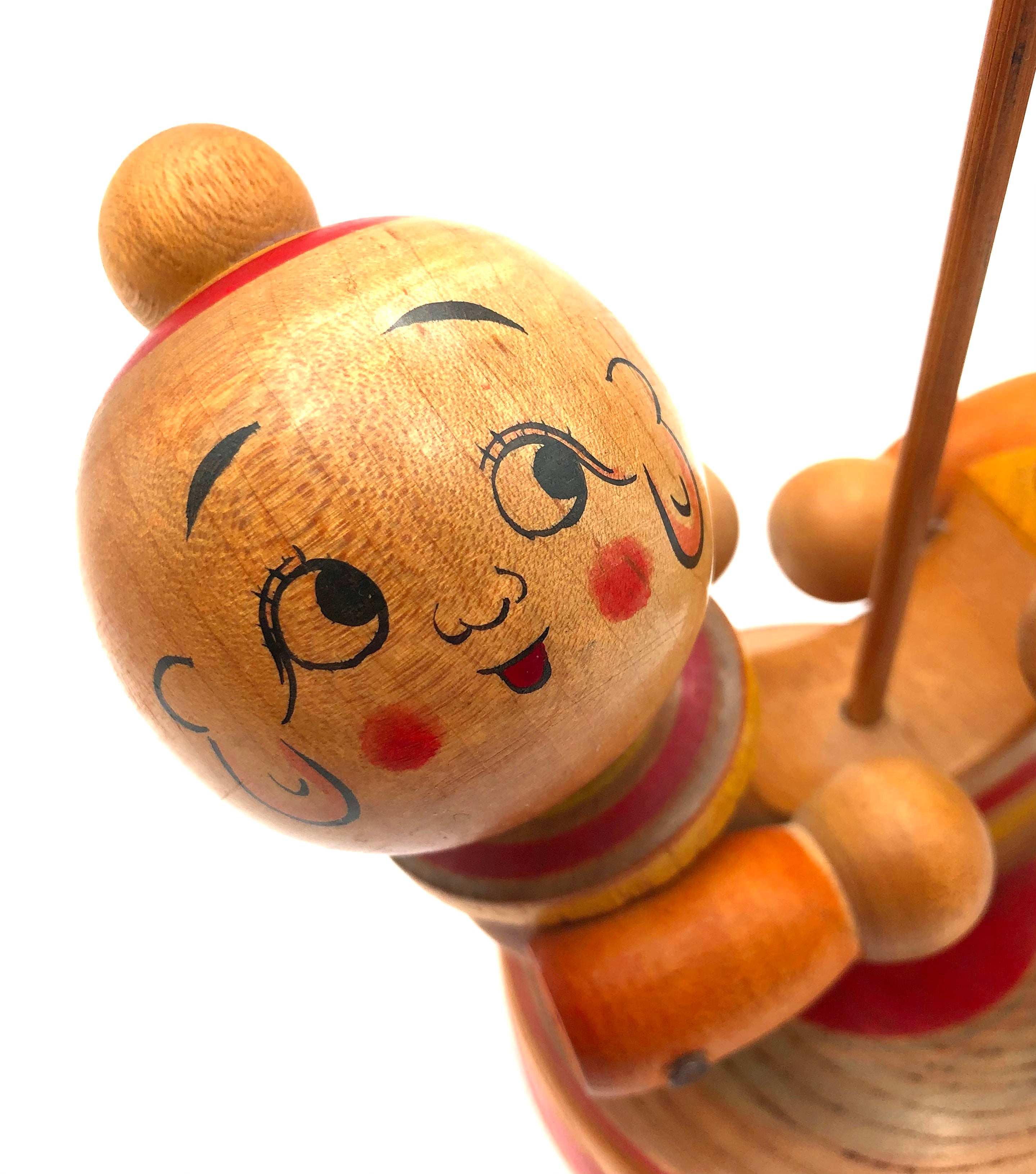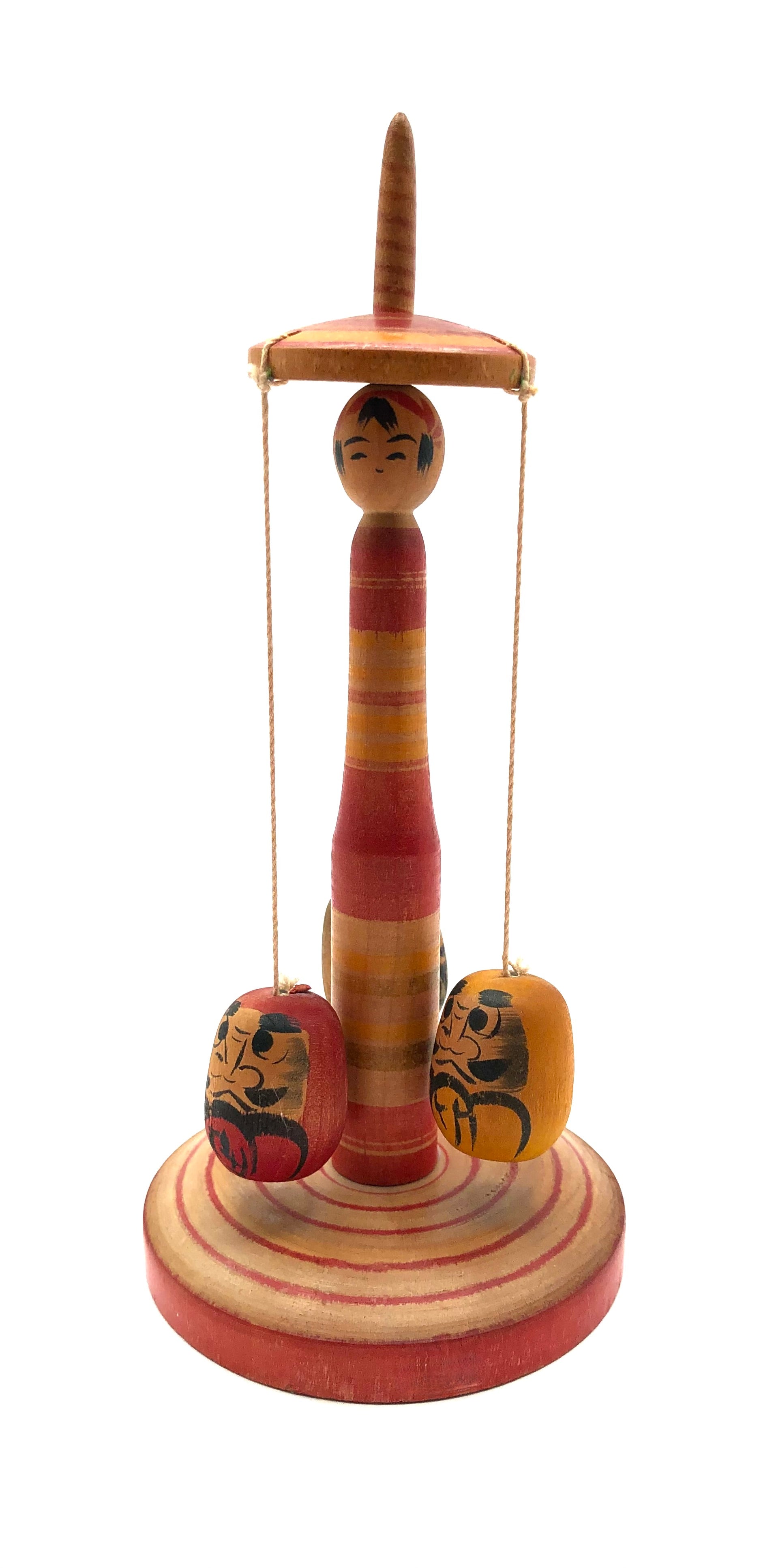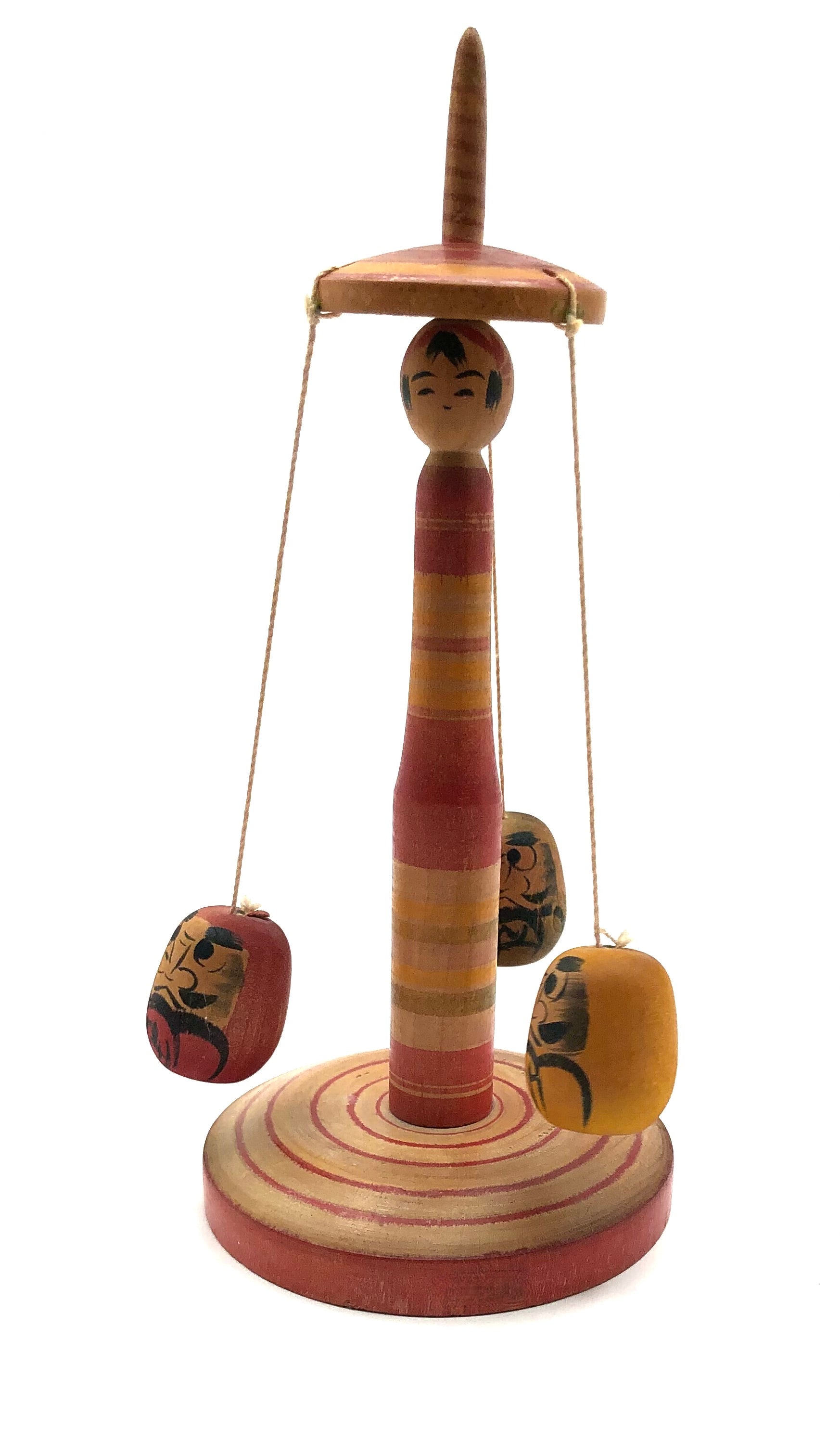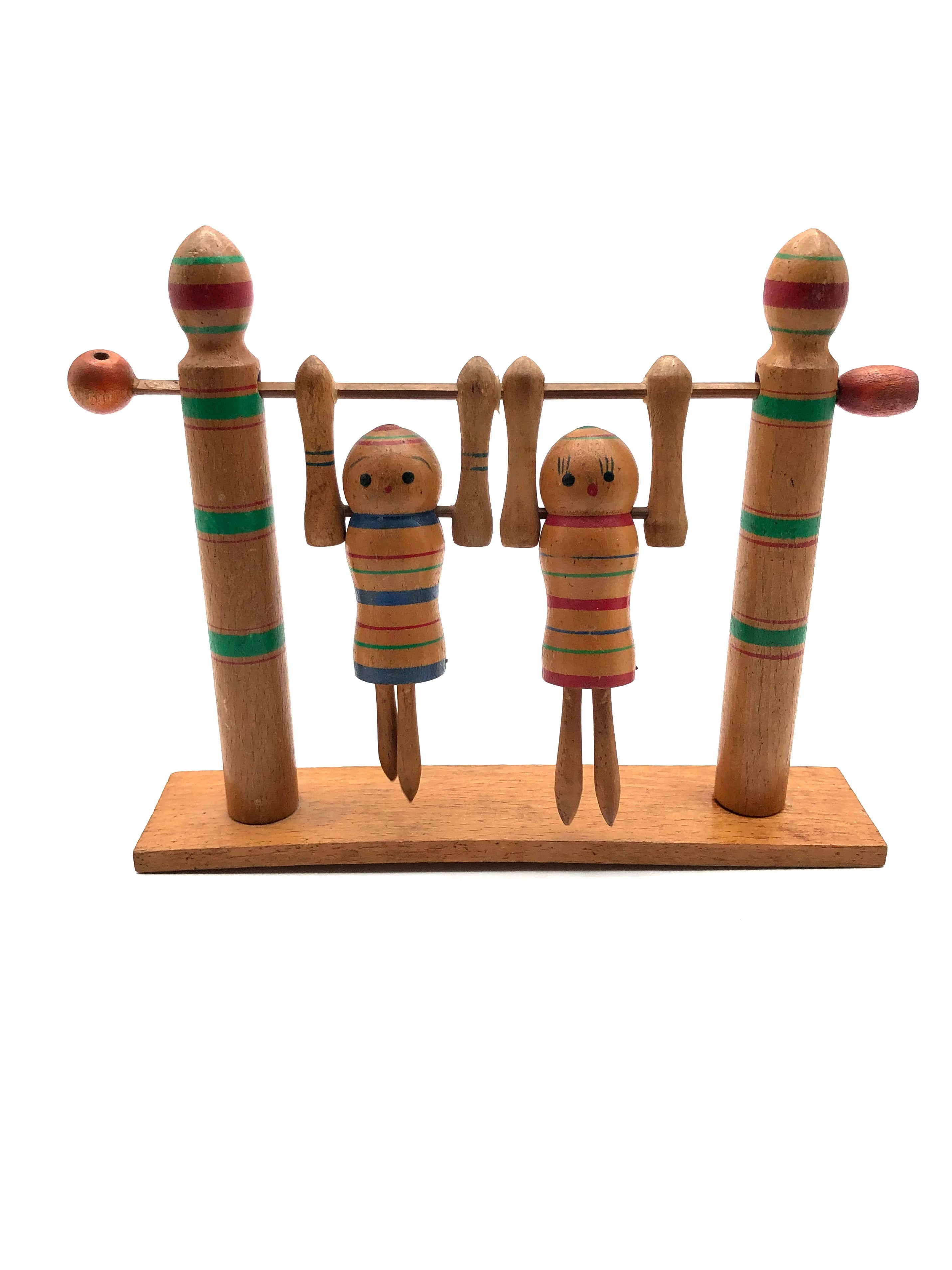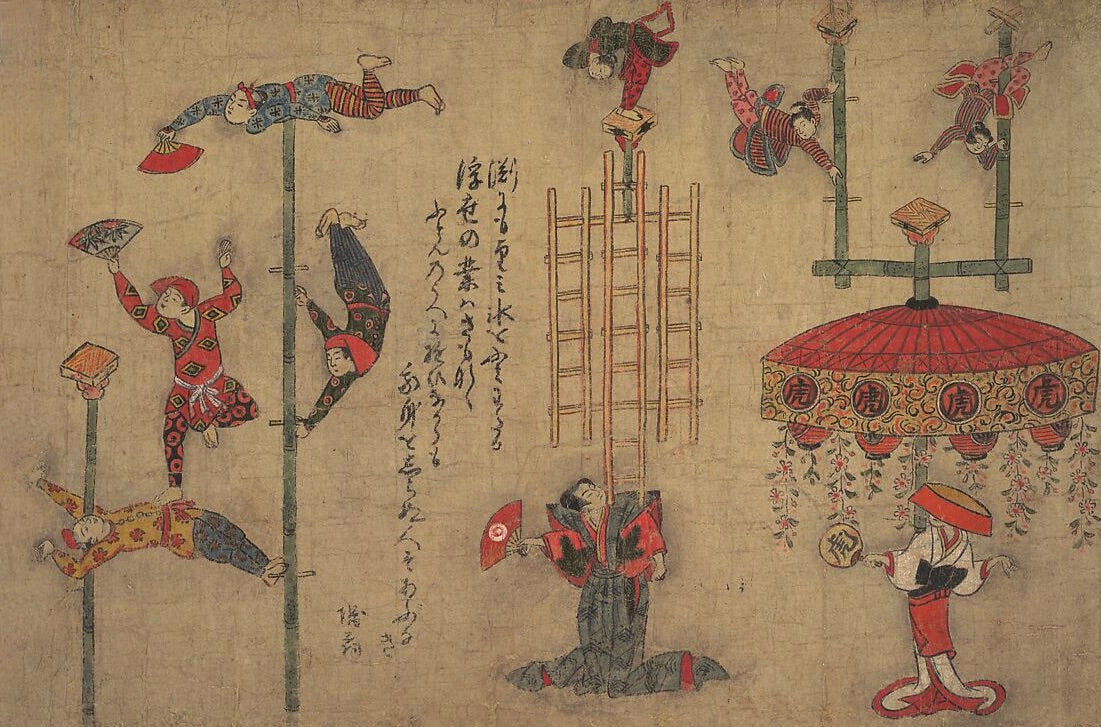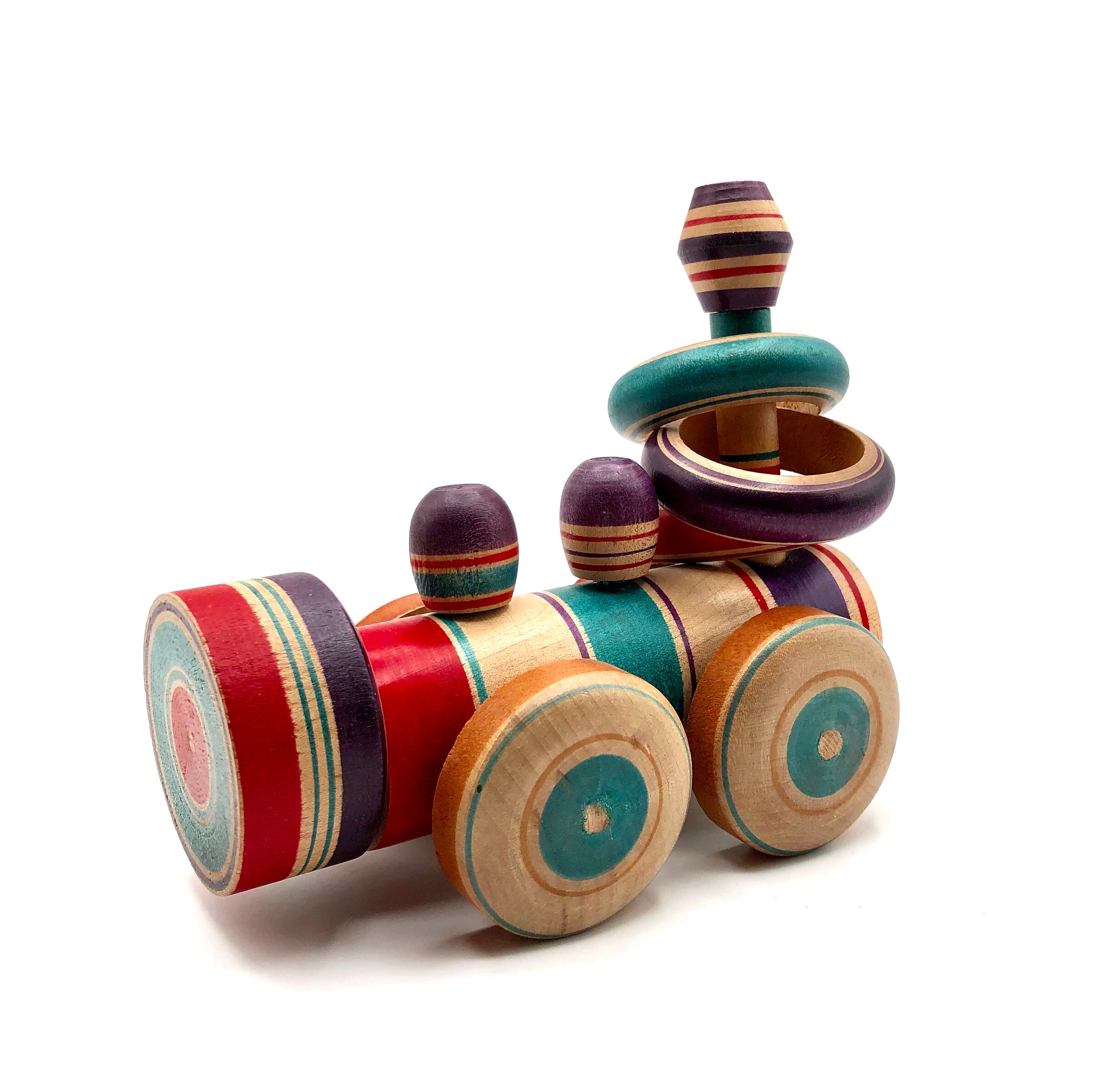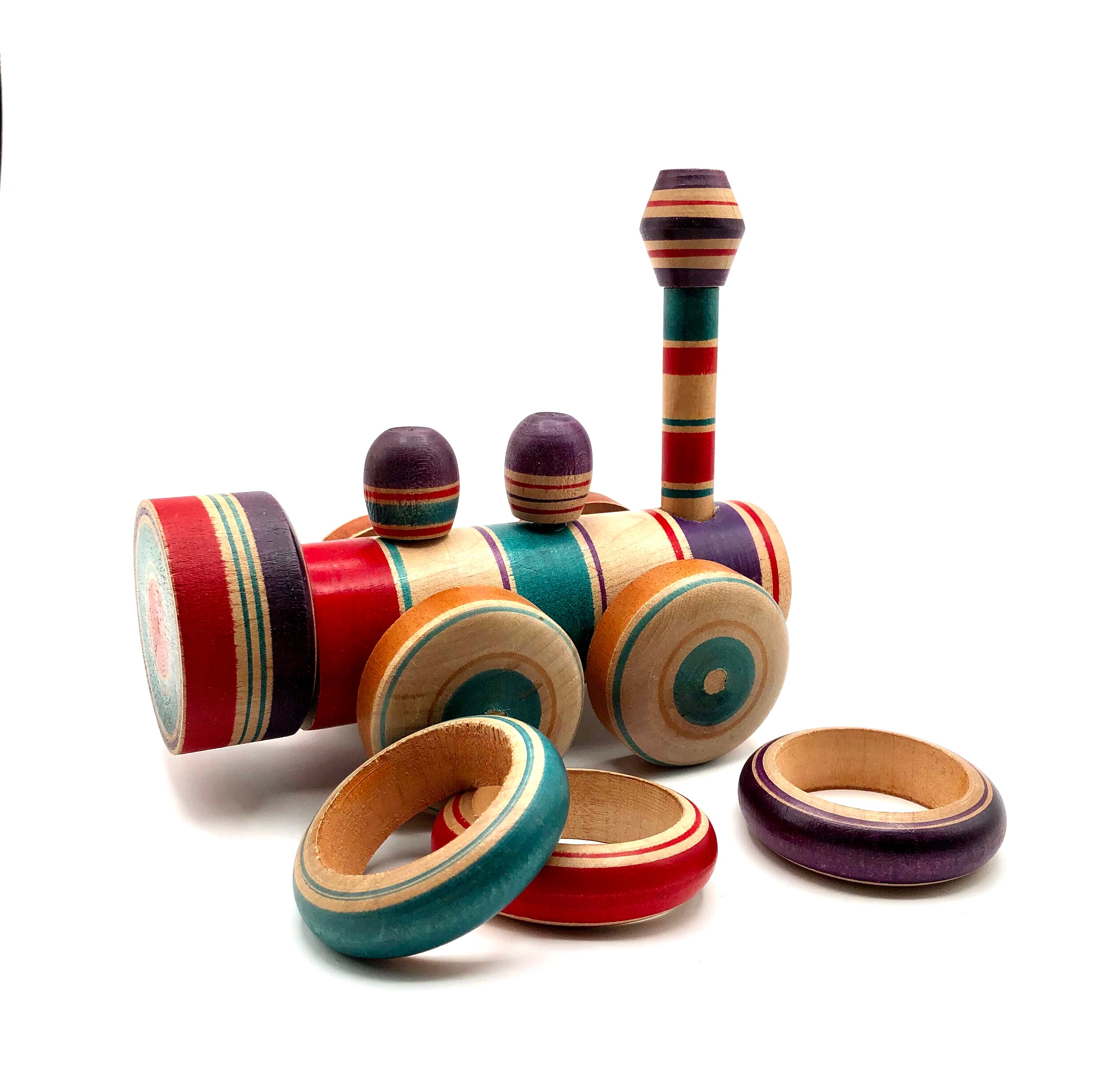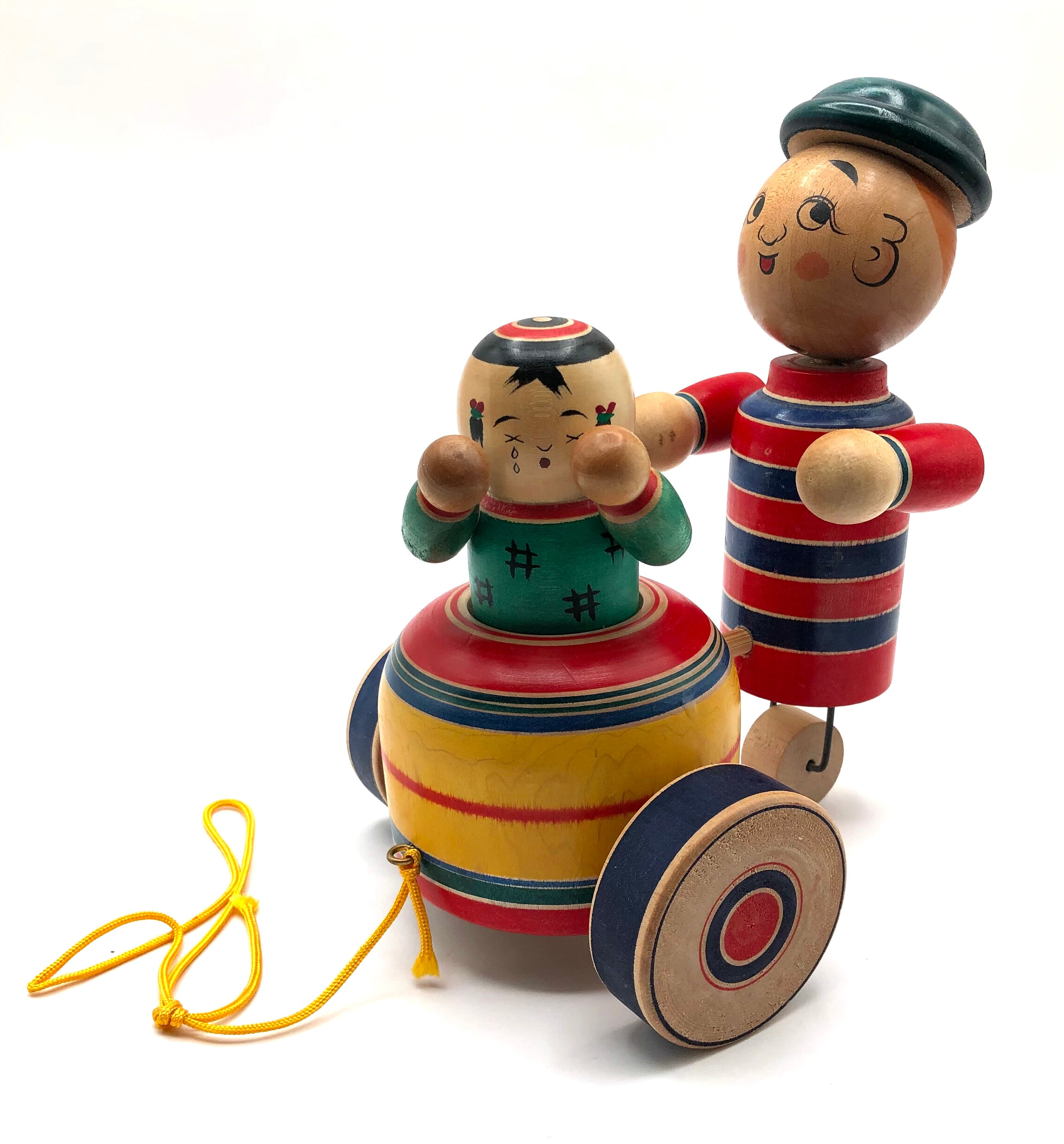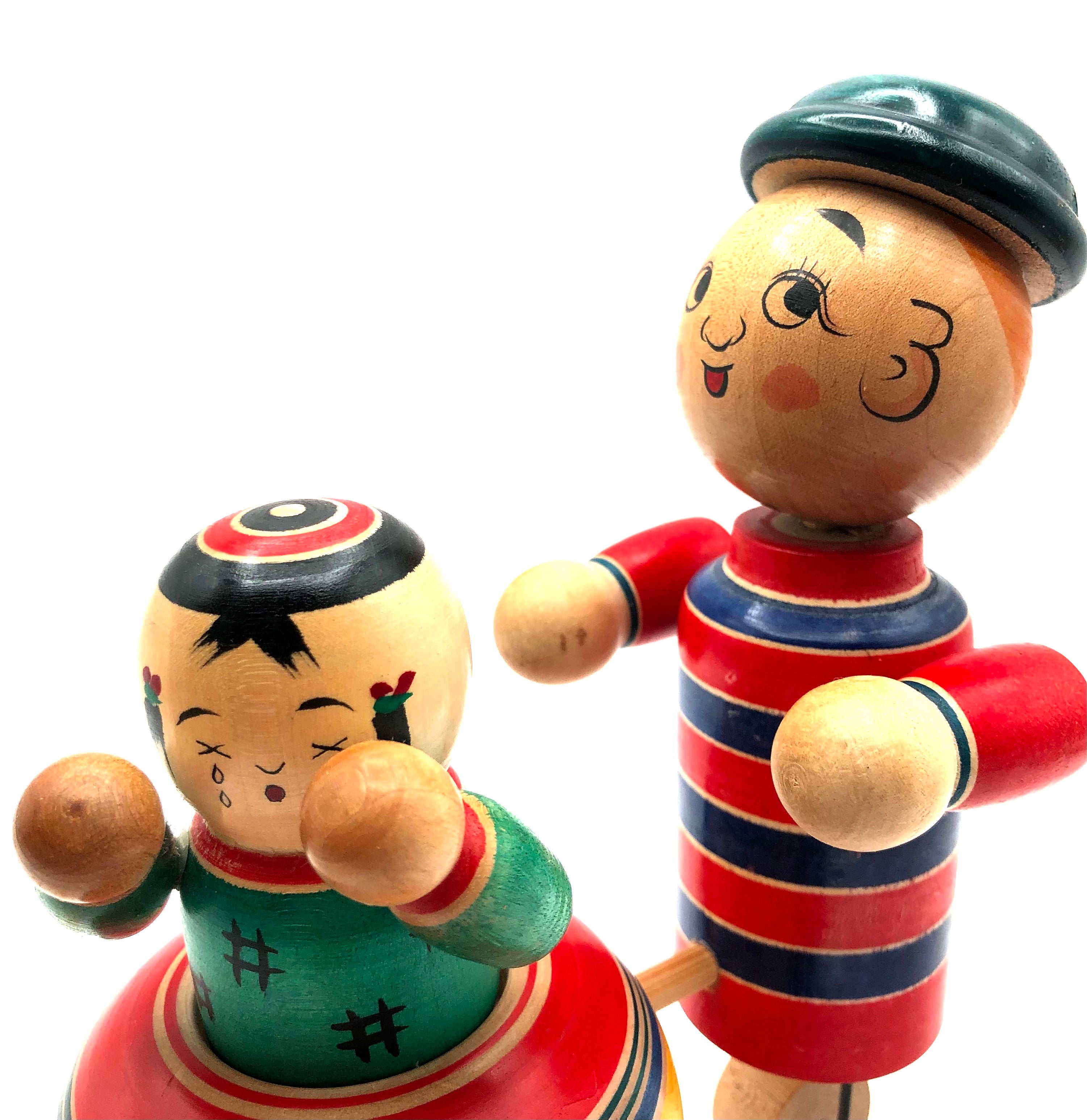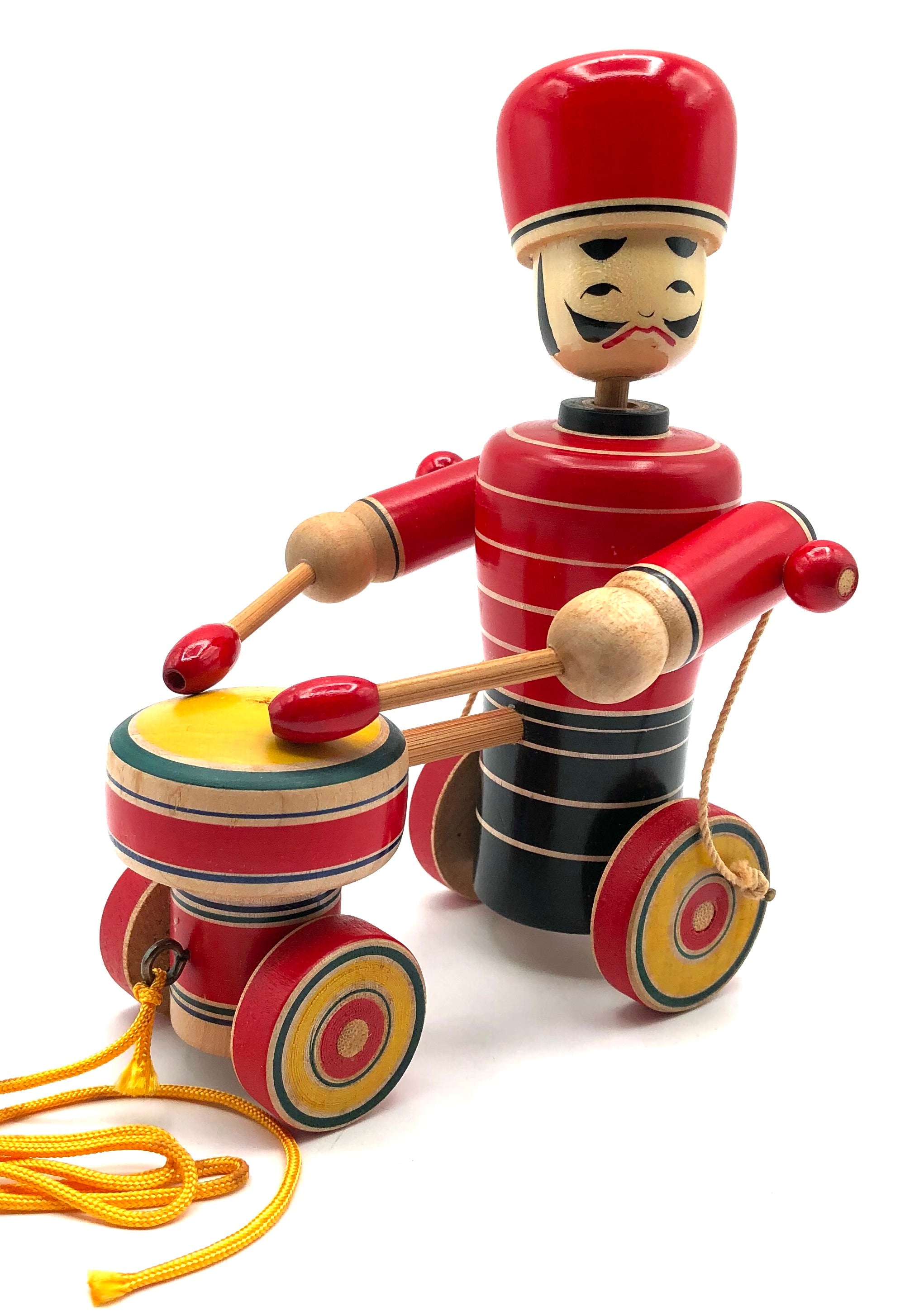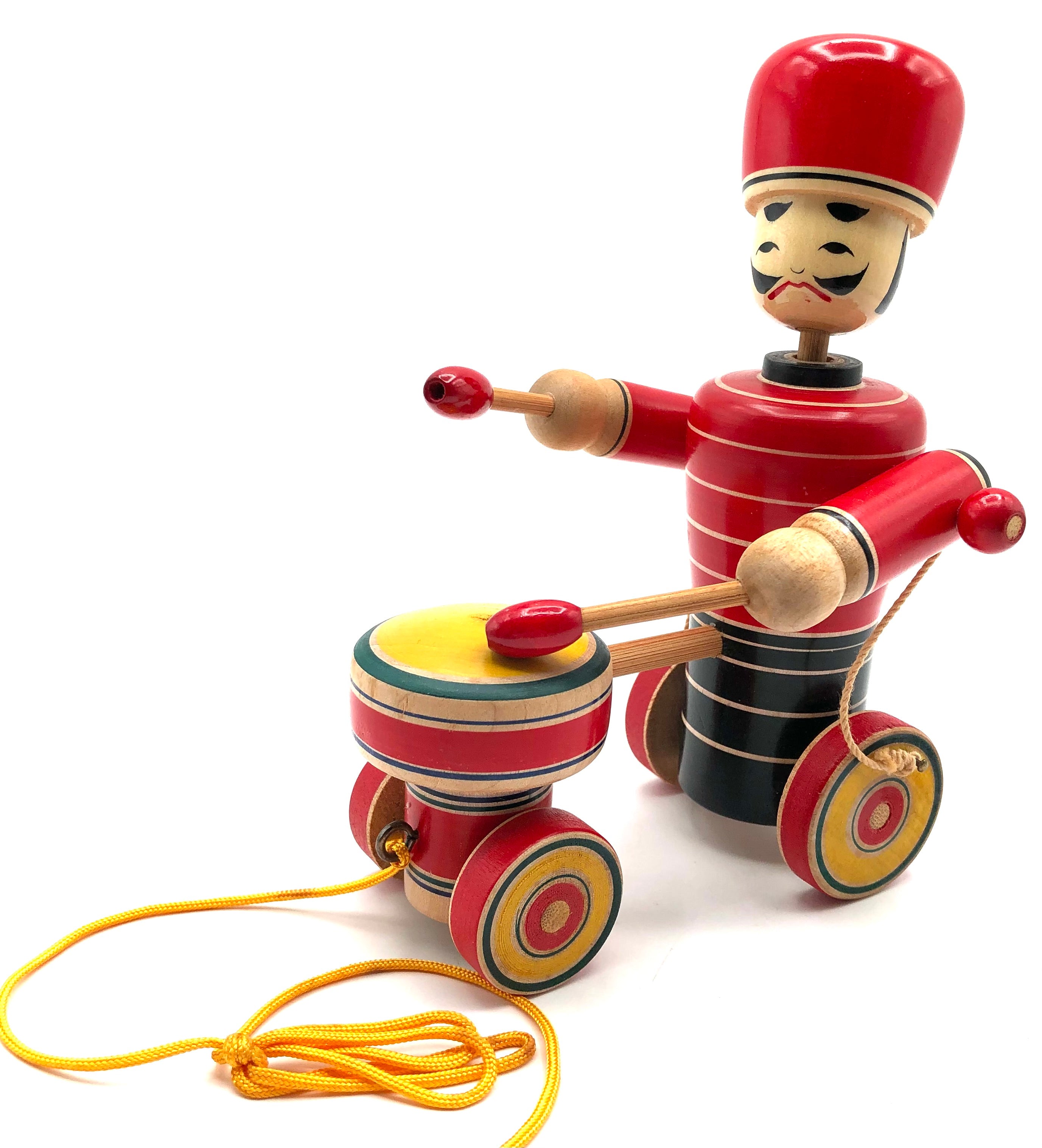Artisan | Interactive Toymaker: Tsuta Family – Sakuzuo, Mamoru, Fumio | 1892-1944
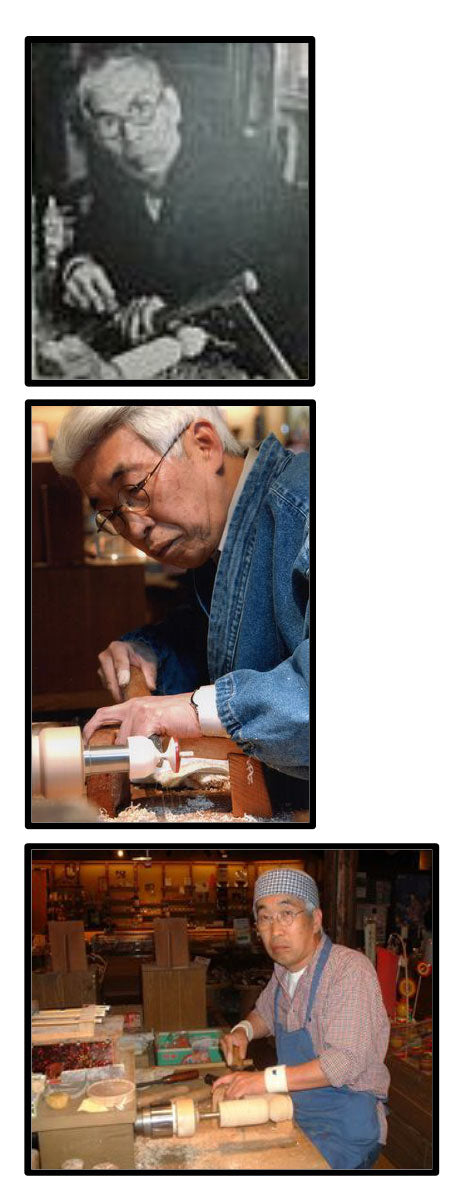
Origin:
Grandfather Sakuzuo (1892-1957), Father Mamoru (1928-2009), and son Fumio (1944-), handed down toys and spinning top making from generation to generation and have been producing for over 100 years. They were members of the Japan Top Spinning Association throughout their operation. The family holds several awards for their creations and Mamour's son Fumio, carried on the business producing and sell their creations at the Onogawa Onsen, Yamagata Prefecture, since the beginning of this family enterprise. They went out of business in 2020 after COVID interrupted their operation. Today we look at these folk and ethnic toys from the past with nostalgia and marvel at the engineering ability of early Japanese toy makers.
Collector's note – descriptive qualities, standard characteristics & ornamentation styles:

Japanese toy makers changed the stagnant fixed toy with their amazing interactive and mechanical toys respresenting three-dimensional images of animals and children playing. The majority of the toys are pull and action figures. Early Japanese toys borrowed heavily from German techniques. However, Japanese toys, Kendama, tops, Oyako Daruma, and Battledore were usually made from recycled wood and painted in primary colors. They are derived from the lives of common people that embody the beliefs, religion, the zodiac system, folktales, festivals, aesthetics, and sense of happiness found in one’s native land. Born on Japanese soil, these handmade toys possess the warm-heartedness of being raised by the common people. Hence for the Japanophile, these unique pieces are true treasures.
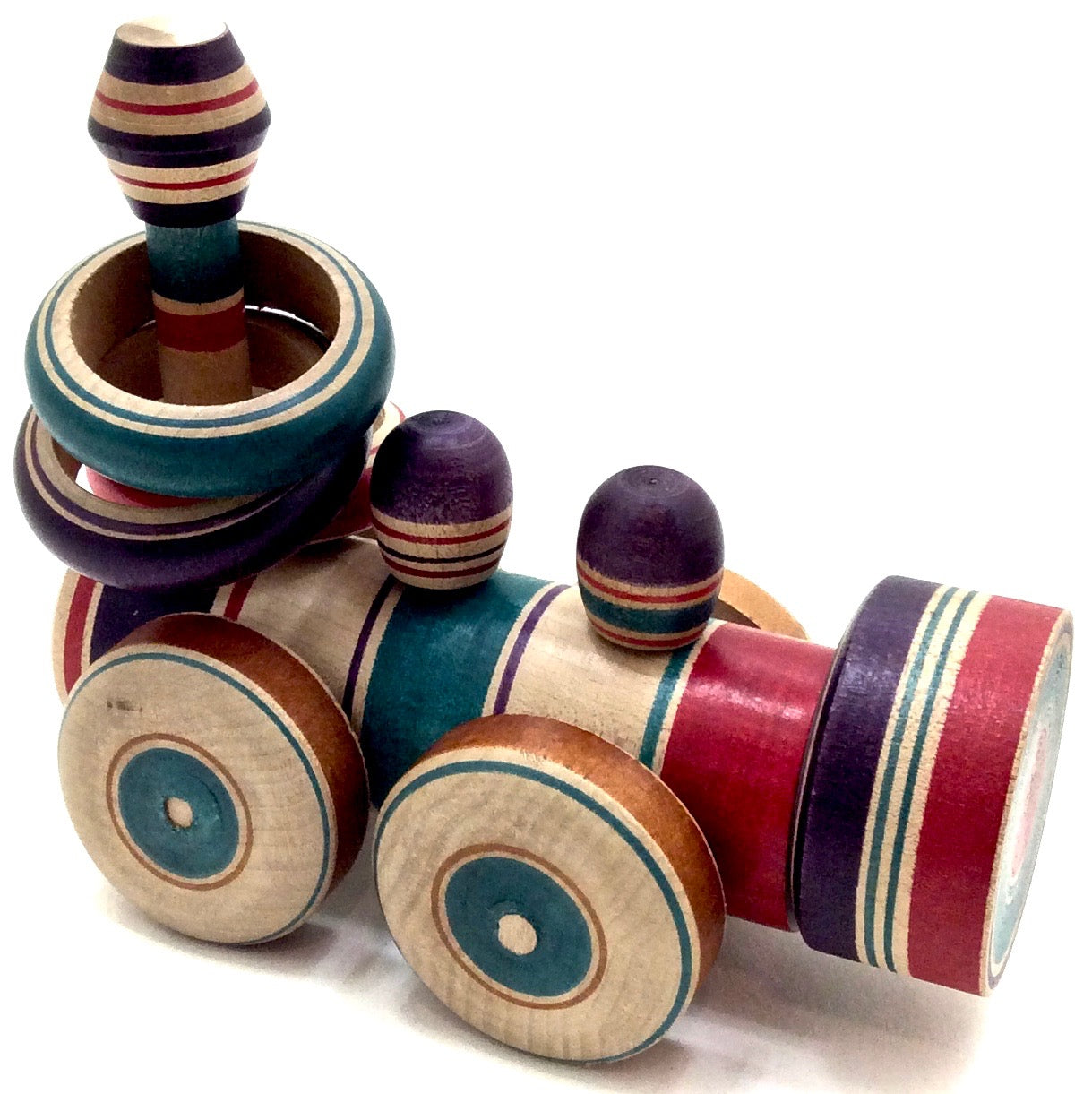
Train Ring Toss
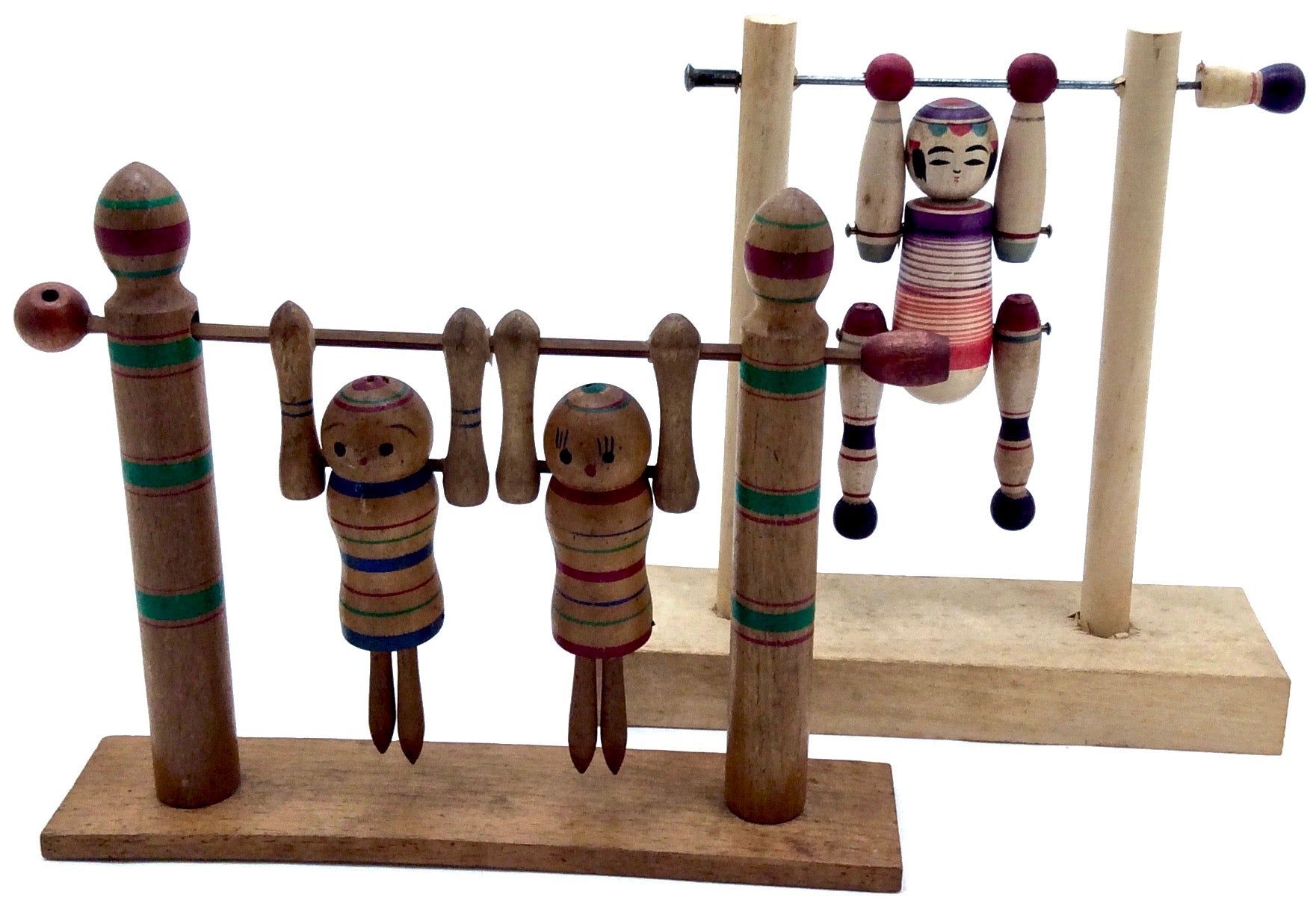
Rare Yajirou Kokeshi “Acrobats”
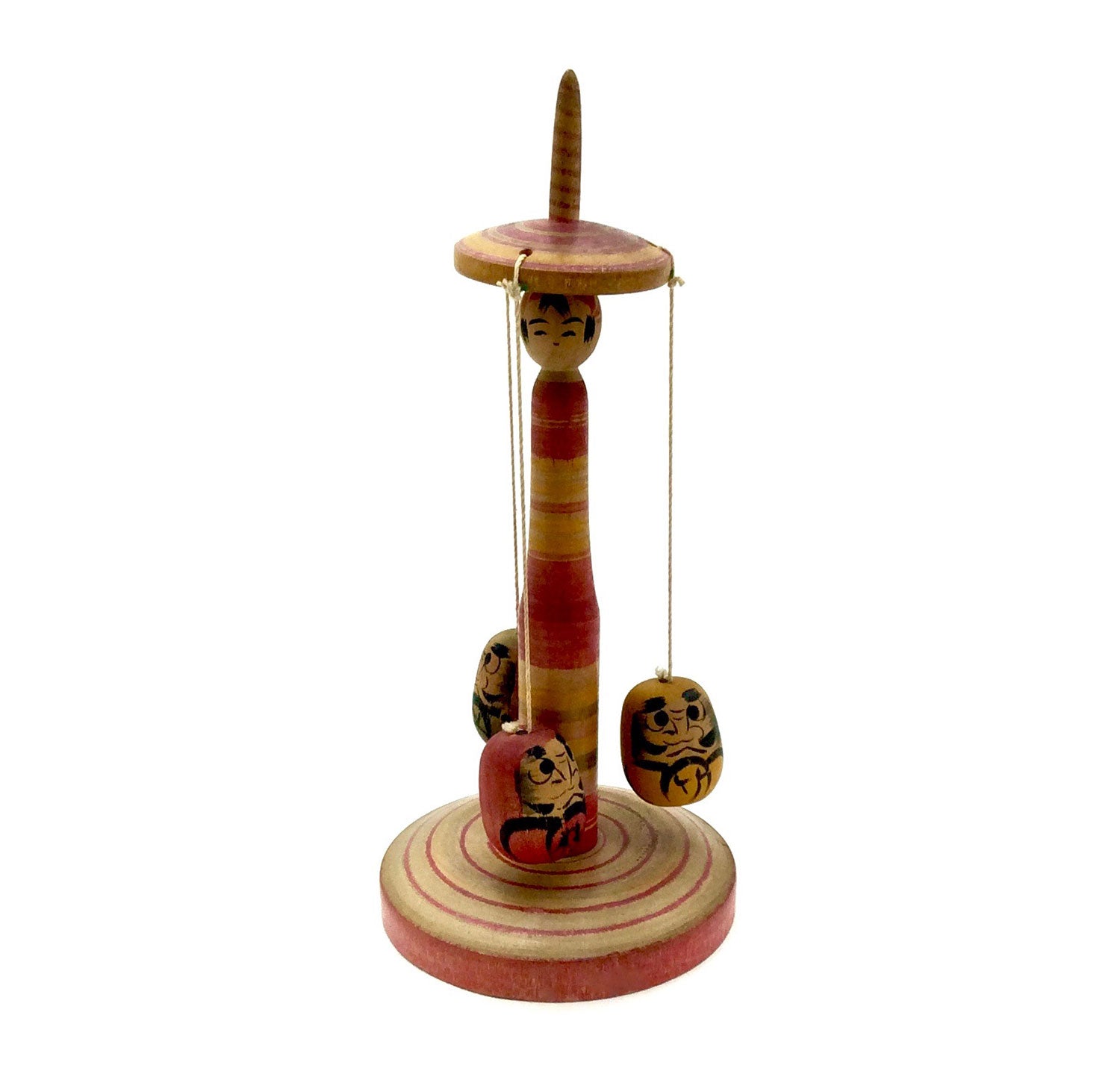
Daruma Spinning Top “Kijigangu” by Tsuta, Mamoru | 1928-2009
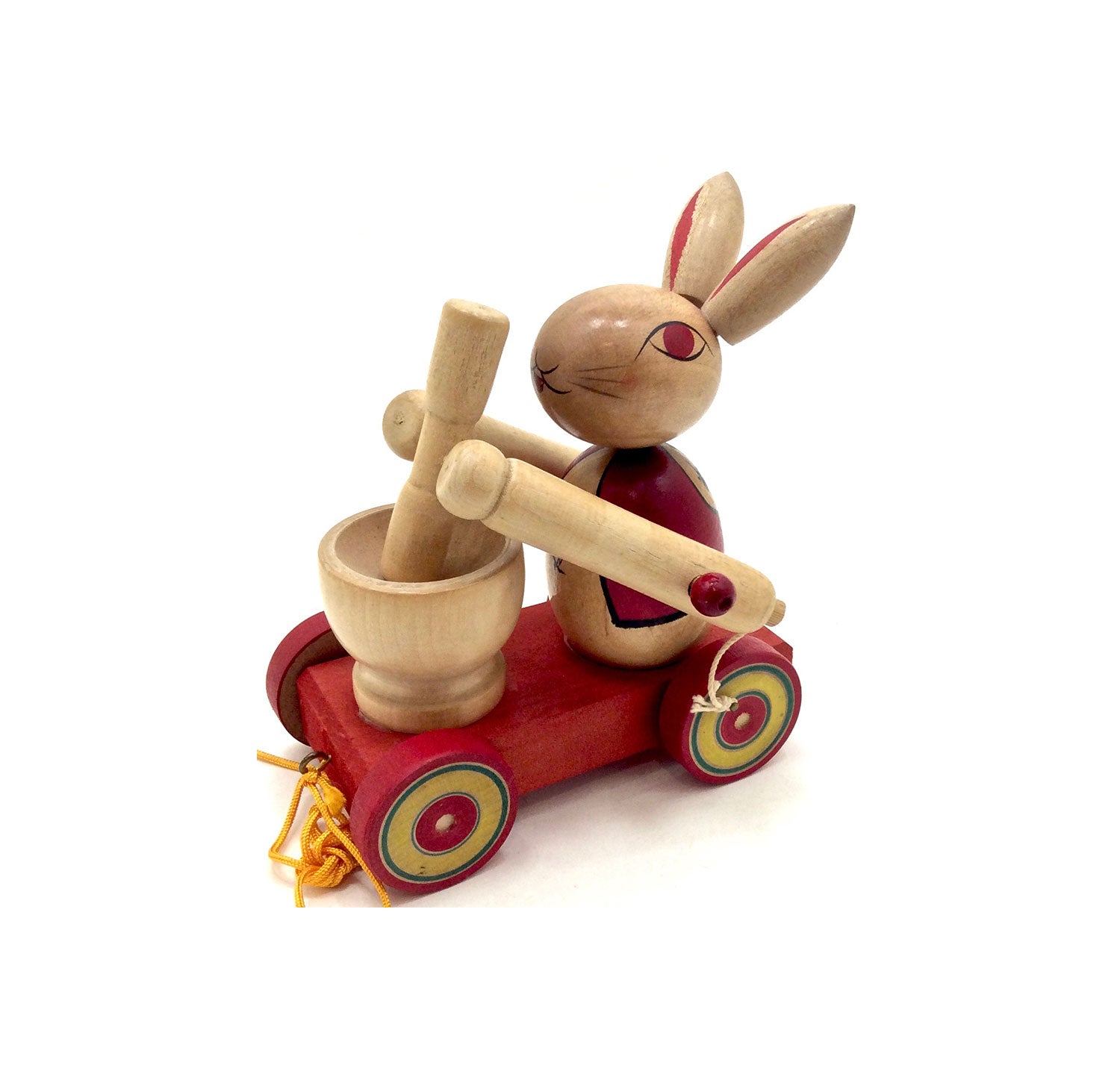
Tsuta, Fumio | 1944-
Origin:
Tsuta, Fumio, son of Mamoru, (1928-2009), continues to produce and sell their creations at the Onogawa Onsen, Yamagata Prefecture since the beginning of this family enterprise. We are featuring him separately from his family only to focus on the evolution of the Tsuta family toys.
The Zodiac Symbols were utilized over a century ago, when it was fashionable to display as one of the household objects focused on the similar characteristics and wishes supportive of their family members. “The RABBIT supposedly lives on the moon and pounds out the elixir of immortality."

